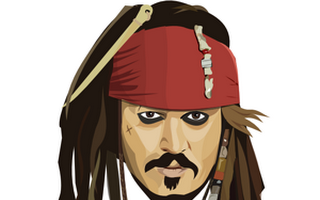What is Python?
Python is an interpreted, object-oriented, high-level programming language with dynamic semantics. Its high-level built in data structures, combined with dynamic typing and dynamic binding, make it very attractive for Rapid Application Development, as well as for use as a scripting or glue language to connect existing components together. Python's simple, easy to learn syntax emphasizes readability and therefore reduces the cost of program maintenance. Python supports modules and packages, which encourages program modularity and code reuse. The Python interpreter and the extensive standard library are available in source or binary form without charge for all major platforms, and can be freely distributed.
Often, programmers fall in love with Python because of the increased productivity it provides. Since there is no compilation step, the edit-test-debug cycle is incredibly fast. Debugging Python programs is easy: a bug or bad input will never cause a segmentation fault. Instead, when the interpreter discovers an error, it raises an exception. When the program doesn't catch the exception, the interpreter prints a stack trace. A source level debugger allows inspection of local and global variables, evaluation of arbitrary expressions, setting breakpoints, stepping through the code a line at a time, and so on. The debugger is written in Python itself, testifying to Python's introspective power. On the other hand, often the quickest way to debug a program is to add a few print statements to the source: the fast edit-test-debug cycle makes this
History of Python
Python was developed by Guido van Rossum in the late eighties and early nineties at the National Research Institute for Mathematics and Computer Science in the Netherlands.
Python is derived from many other languages, including ABC, Modula-3, C, C++, Algol-68, SmallTalk, and Unix shell and other scripting languages.
Python is copyrighted. Like Perl, Python source code is now available under the GNU General Public License (GPL).
Python is now maintained by a core development team at the institute, although Guido van Rossum still holds a vital role in directing its progress.
You can access the history of python from this link.
https://en.wikipedia.org/wiki/History_of_Python
It is used for:
- web development (server-side),
- software development,
- mathematics,
- system scripting.
What can Python do?
- Python can be used on a server to create web applications.
- Python can be used alongside software to create workflows.
- Python can connect to database systems. It can also read and modify files.
- Python can be used to handle big data and perform complex mathematics.
- Python can be used for rapid prototyping, or for production-ready software development.
Why Python?
- It is easy to learn – the time needed to learn Python is shorter than for many other languages; this means that it’s possible to start the actual programming faster;
- It is easy to use for writing new software – it’s often possible to write code faster when using Python;
- It is easy to obtain, install and deploy – Python is free, open and multiplatform; not all languages can boast that.
- Python works on different platforms (Windows, Mac, Linux, Raspberry Pi, etc).
- Python has a simple syntax similar to the English language.
- Python has syntax that allows developers to write programs with fewer lines than some other programming languages.
- Python runs on an interpreter system, meaning that code can be executed as soon as it is written. This means that prototyping can be very quick.
- Python can be treated in a procedural way, an object-oriented way or a functional way.
Where
Python is the programming language that opens more doors than any other. With a solid knowledge of Python, you can work in a multitude of jobs and a multitude of industries. And even if you don’t need it for work, you will still find it useful to know to speed certain things up or develop a deeper understanding of other concepts.
Python is a great choice for career paths related to software development, engineering, DevOps, machine learning, data analytics, web development, and testing. What's more, there are also many jobs outside the IT industry that use Python. Since our lives are becoming more computerized every day, and the computer and technology areas previously associated only with technically gifted people are now opening up to non-programmers, Python has become one of the must-have tools in the toolbox of educators, managers, data scientists, data analysts, economists, psychologists, artists, and even secretaries.
Python Features
Python's features include
· Easy-to-learn − Python has few keywords, simple structure, and a clearly defined syntax. This allows the student to pick up the language quickly.
· Easy-to-read − Python code is more clearly defined and visible to the eyes.
· Easy-to-maintain − Python's source code is fairly easy-to-maintain.
· A broad standard library − Python's bulk of the library is very portable and cross-platform compatible on UNIX, Windows, and Macintosh.
· Interactive Mode − Python has support for an interactive mode which allows interactive testing and debugging of snippets of code.
· Portable − Python can run on a wide variety of hardware platforms and has the same interface on all platforms.
· Extendable − You can add low-level modules to the Python interpreter. These modules enable programmers to add to or customize their tools to be more efficient.
· Databases − Python provides interfaces to all major commercial databases.
· GUI Programming − Python supports GUI applications that can be created and ported to many system calls, libraries and windows systems, such as Windows MFC, Macintosh, and the X Window system of Unix.
· Scalable − Python provides a better structure and support for large programs than shell scripting.
Example
print("Hello, World!")
Finally, you can download the Python compiler from https://www.python.org/downloads










No comments:
Post a Comment